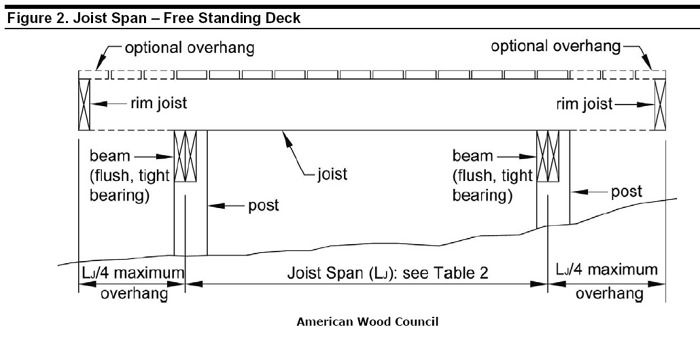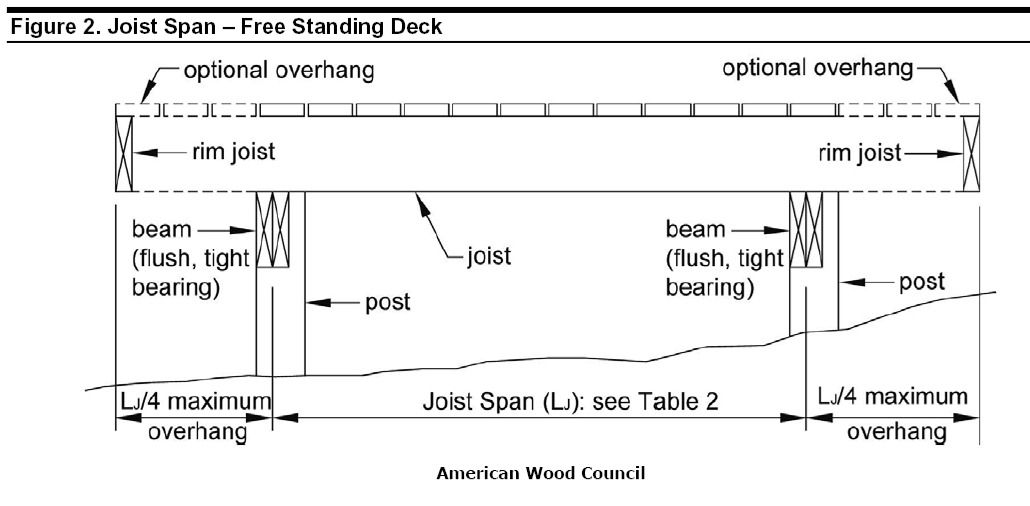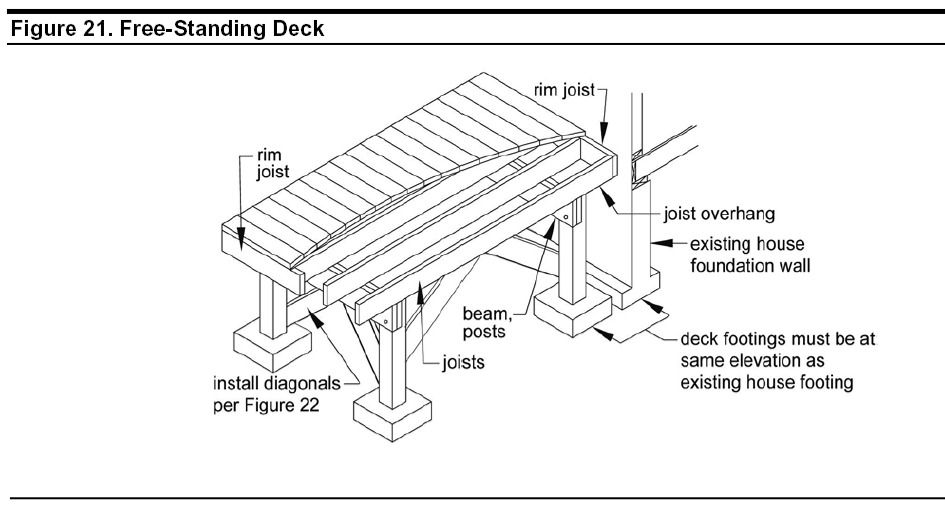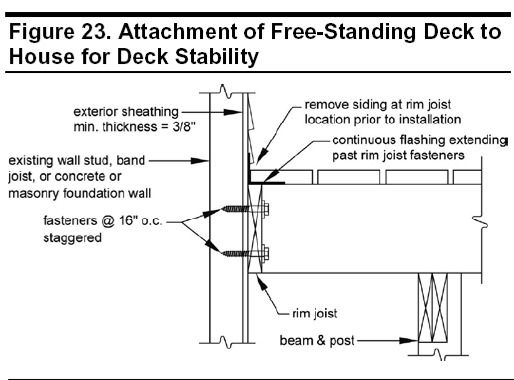
Decks were not in the plans when many homes were built, so the framing was not designed to permit easy deck ledger attachment. Many homes framed with wood I-joists and floor trusses, for example, will require extra blocking and engineered reinforcement in order to mount a ledger securely.
Older homes that are timber-framed or balloon framed present more challenges. Likewise, newer homes built with SIPs or ICFs are difficult to mount ledgers to. Then there are cladding challenges: EIFS, stucco, veneer brick, stone, synthetic stone and other thick and non-structural siding materials don’t lend themselves to easy ledger installation.
While there are work-arounds you can employ to mount a deck ledger to a house with a challenging situation, it may not be worth the effort. In these cases, I often opt for a free-standing deck, which can be simpler to build and more cost-efficient when compared to the cost to cure a challenging ledger situation.
Free-standing doesn’t mean the deck can’t be attached to the house, it just means that the deck frame must be self-supporting. You can still install a couple bolts or screws into the house frame – just as long as the deck has footings all around.
A free-standing deck needs a beam, support posts and footings along both the outside and the house side. Often, those footings near the house will have to be dug to the depth of the house foundation footings to reach undisturbed earth.
A good resource for designing a free-standing deck is the American Wood Council’s “Prescriptive Residential Wood Deck Construction Guide,” available online at www.awc.org. See pages 4, 14 and 15 for information on freestanding decks.
Fine Homebuilding Recommended Products
Fine Homebuilding receives a commission for items purchased through links on this site, including Amazon Associates and other affiliate advertising programs.

Get Your House Right: Architectural Elements to Use & Avoid

Not So Big House

Code Check 10th Edition: An Illustrated Guide to Building a Safe House
































